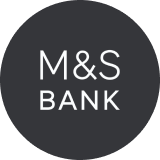If you’ve ever taken out a loan, you’ll know that one of the most important factors which dictates how much you end up paying back is the interest rate.
Interest rates and how they impact your loan repayments can be a difficult concept to understand, especially if you’re new to the world of personal finance.
All personal loans, whether secured or unsecured, charge interest.
This means that if you’re in the market for some interest-free credit, a personal loan won’t be the number one option for you.
However, there are a few options out there if you want to get your hands on some interest-free credit – you just need to be aware of how it works and the pros and cons.
In this article, we’ll be taking a closer look at interest and APR, how interest-free credit products work, and the options you can explore.
So, let’s dive into interest, loans, and credit.
Why do you have to pay interest on loans?
There are a few different reasons as to why lenders require you to pay interest on personal loans, but primarily, it’s how they make money.
The selling point of any type of loan is the convenience it gives you of having cash on hand to pay for the things you need.
This is the product a bank or lender sells to you, and the cost of buying that product is charged as interest.
Also, when banks or credit unions lend you money via a personal loan, they are no longer able to use these funds to make their own purchases or investments.
For this reason, your payment of interest makes amends for this inconvenience.
There’s also always the risk that you could fall behind on loan repayments and default on a loan you’ve borrowed from a lender.
This can be bad for you, and your lender, as they don’t want to go through the hassle of trying to recover your debt.
So, your payments of interest on any cash you borrow makes yourlenders’ risk of you defaulting more worth it.
Generally, the more risk lenders think there is of you defaulting on yourloan, the greater the interest rate will be.
In other words, if you’ve defaulted on a loan before, or your credit score is not in great shape, or you have very low income, you will be thought of as a riskier lending prospect and will be asked to pay more to borrow over the life of the loan.
Lastly, lenders require you to pay interest because, even though you’ve received the funds you’ve borrowed, inflation is likely to reduce the actual value of the sum over time.
So when your lender gets the money back they’ve lent you, it will probably be worth less compared to before, even though it’s the same amount of money.
You paying interest therefore helps yourlender to recoup an amount of money which represents the actual value of the loan at the end of the repayment period.
What is APR?
APR stands for ‘Annual Percentage Rate’.
You might have seen this figure next to personal loans you’ve already explored.
Essentially, it represents the total cost of borrowing money over the period of a year and is expressed as a percentage of the total sum of cash you’ve borrowed.
Handily, APR takes into account not just the interest rate, but also any other fees or charges which the lender will expect you to pay on top of the loan.
Things like processing fees or early repayment fees will come into the equation to calculate the APR.
Overall, this means that the APR will give you a more accurate picture of the total cost of borrowing than if you just consider the interest rate alone.
When you’re exploring different loan products you might want to take out, it’s hugely important to compare the APRs rather than just the interest rates.
For instance, you might find that a loan with a verylow interest rate, but it actually comes with a high APR as it has lots of additional fees and charges tacked on.
If you make sure you understand the APR, you will get a better idea of the total cost of your borrowing, and you can apply with confidence in the knowledge that you won’t be hit with any surprise charges.
But remember, whilst it’s a useful figure to have at hand, it’s worth bearing in mind that APR can sometimes be a bit misleading.
This is because it assumes that you’ll keep the loan for the full term your lender outlays and make all the repayments on time.
If you end up repaying yourloan early, or miss any payments, the actual cost of borrowing may be different from the APR which you saw advertised.
Nonetheless, APR can still be a useful tool for comparing different loan products and making informed decisions about how much you should borrow, and from who – but make sure you check all the small print in terms of early repayment charges and late repayment fees too.
If you keep up with payments and try not to repay early unless you’re not penalised to do so, the APR should be an accurate picture of what your overall total will be.
If I have to pay interest, why would I get a personal loan instead of a credit card?
Even though lenders ask you to pay interest on a personal loan, they are still a hugely popular borrowing option.
Typically, interest rates lenders charge on personal loans are far lower than that of credit cards, and you can borrow more.
If you’re looking to borrow many thousands of pounds to cover an unexpected cost, renovate your home, or fund a life event, taking out a relatively low-interest personal loan over a longer period might be a more suitable option than a credit card.
Furthermore, taking out a personal loan and responsibly paying it back on time might actually improve your credit score.
In personal finance, there’s a concept called ‘credit mix’.
If you have a good credit mix, this means that you’ve accessed a variety of credit options rather than sticking to just credit cards, for example.
Showing lenders that you can handle managing a few different types of credit products can make it easier to get loans in the future, as you will be able to demonstrate to lenders that you understand how to use credit effectively.
With that being said, if you’re looking to borrow a relatively small amount of money and can pay it back over a short period, there are lots of interest-free credit solutions on the market which you may be able to qualify for if you don’t fancy shelling out more than you anticipated to borrow money.
It’s always important to compare your options and think about ‘what if’ scenarios to make an informed decision that’s best for you.
Interest free credit products
While personal loans always carry interest, there are sometypes of credit products thatyou don’t have to pay any interest on.
This will come as good news if you are looking to borrow interest-free.
1. Certain credit card companies offer customers interest-free cards for a limited time.
This usually ranges from six months to a year.
During this period, you won’t be required to pay any interest on the amount you borrow, however much that is.
But it’s important to note that you’ll usually need to pay back the full amount you borrow before the interest-free period actually ends.
This means that using an interest-free credit card can work better if you’re in need of a relatively small sum of money to tide you over, as you’ll find it less difficult to pay this amount back before your credit use starts incurring interest fees.
2. Lots of banks offer an interest-free buffer on arranged overdrafts.
This means that a supplementary sum will be added to your existing overdraft, which you won’t pay interest on or be charged a fee to use.
This could be a handy solution if you only want to borrow a small amount over a short time to cover an unexpected bill, for example.
However, overdrafts shouldn’t be used for long-term borrowing in an ideal world.
The amounts offered with interest-free buffers vary widely among different banks. To avoid being charged hefty fees, be sure to check the terms and conditions carefully before you choose to take this borrowing route.
3. Taking out a 0% balance transfer card is a further option for interest-free borrowing. If you’re stuck in a situation where you’re paying high rates of interest on other existing credit cards, you can transfer the balances to one card under this method of borrowing.
This will mean that you can pay off your remaining debt without being charged interest. These cards will usually offer a set period within which you can do this.
Whilst this is a fantastic solution for many, it’s important to be aware that a lot of 0% balance transfer cards aren’t completely free.
Typically, lenders will expect you to pay a transfer fee – usually sitting at around 3% – on the balance thatyou transfer to your new card. It’s also a good idea to clarify the length of your interest-free period from the get-go.
This varies widely among lenders – anywhere from 18 to 29 months – so it’s important to check that your lender of choice can accommodate your specific situation.
Whilst interest-free borrowing is an appealing prospect, it’s vital to bear in mind that interest-free credit products aren’t always the best option for everybody.
This is because, whilst their name suggests that they may be the cheapest method of borrowing, they can come with fees and charges that are occasionally difficult to ascertain without a lot of research.
This is why it’s important to read the terms and conditions carefully before taking out any type of credit product, including interest-free ones. If you’re already strapped for cash, you don’t want to add further financial burden to an already tricky situation.



